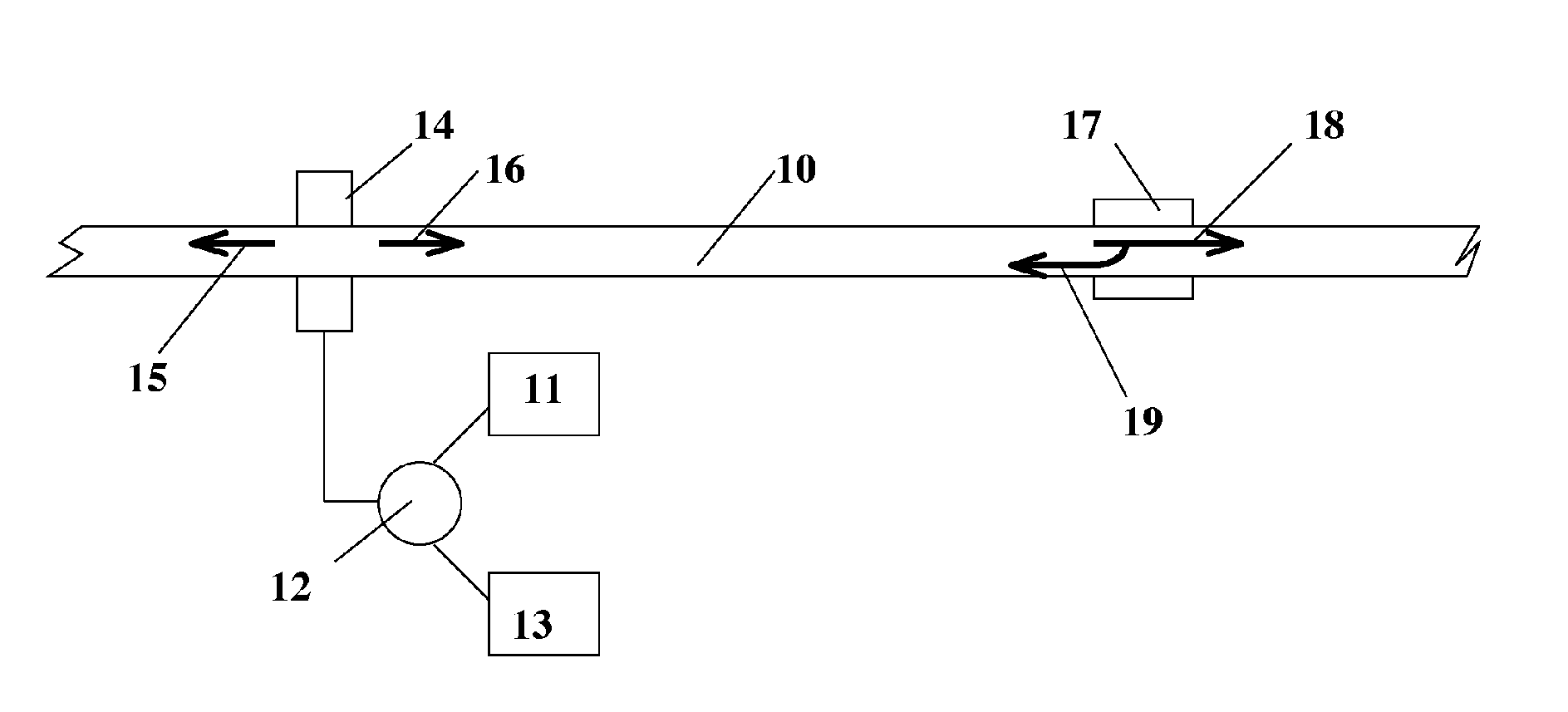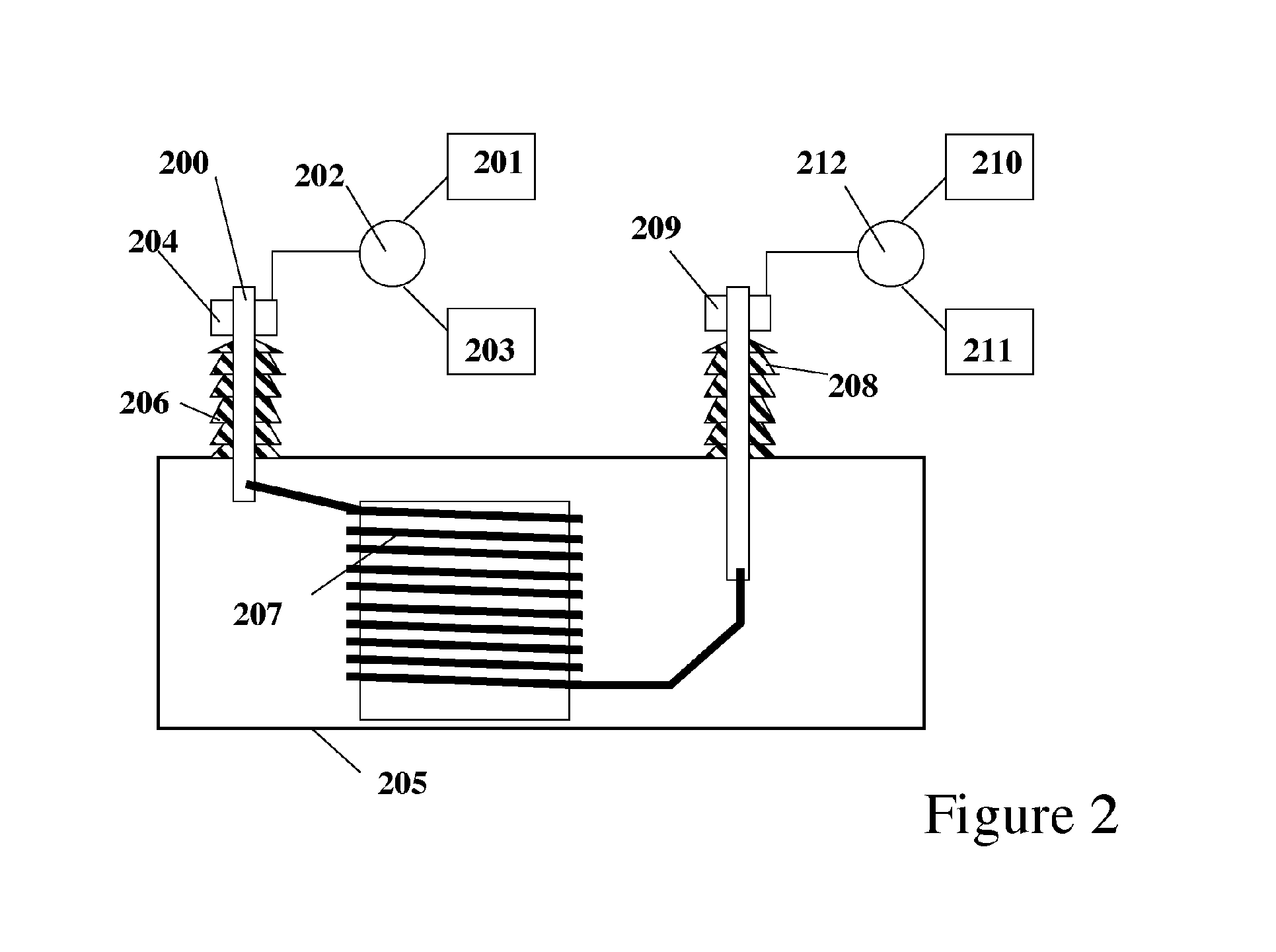Temperature sensor and extensometer
a temperature sensor and extensometer technology, applied in the direction of speed/acceleration/shock measurement devices, digital computer details, measurement using magnetic resonance, etc., can solve the problems of thermal breakdown or aging of the electrically insulating medium surrounding the conductor, unsatisfactory physical sag, and failure of the dielectric insulation of the wire, etc., to achieve the effect of low power
- Summary
- Abstract
- Description
- Claims
- Application Information
AI Technical Summary
Benefits of technology
Problems solved by technology
Method used
Image
Examples
Embodiment Construction
[0036]A thin cylindrical rod can support longitudinal (extension or bar) and transverse (torsional or shear) acoustic modes, along with a multitude of surface modes and combinations of modes. By controlling launch conditions and frequency content of the excitation, a subset of these modes can be excited. The launch conditions, rod diameter and acoustic frequency all depend on the cable dimensions and the properties of the cable materials. For the present application, longitudinal or torsional waves are of primary interest. Such waves will propagate in both the core and sheath of a conductor. The solution of the wave equation for the cylindrical bar is quite tedious and is not presented here for the sake of brevity, but the results are directly analogous to those for both electromagnetic and fiber optic waveguides. The critical aspects of the solution are the cutoff frequency and velocity dispersion behavior for various possible modes. This data is typically presented in terms of pha...
PUM
| Property | Measurement | Unit |
|---|---|---|
| length | aaaaa | aaaaa |
| relaxation frequency | aaaaa | aaaaa |
| acoustic frequency | aaaaa | aaaaa |
Abstract
Description
Claims
Application Information
 Login to View More
Login to View More - R&D
- Intellectual Property
- Life Sciences
- Materials
- Tech Scout
- Unparalleled Data Quality
- Higher Quality Content
- 60% Fewer Hallucinations
Browse by: Latest US Patents, China's latest patents, Technical Efficacy Thesaurus, Application Domain, Technology Topic, Popular Technical Reports.
© 2025 PatSnap. All rights reserved.Legal|Privacy policy|Modern Slavery Act Transparency Statement|Sitemap|About US| Contact US: help@patsnap.com



